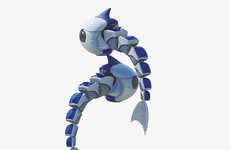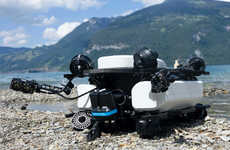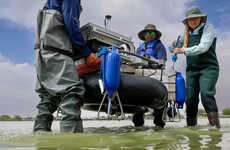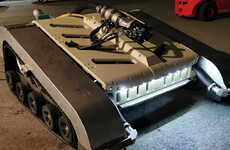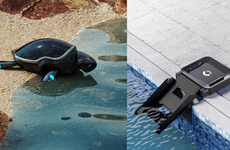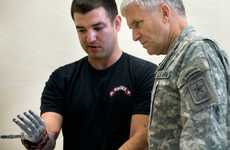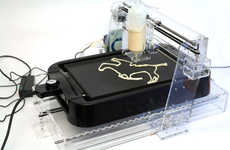
This Robot Fish Can Dive, Float and Explore Like Any Aquatic Animal
References: geekosystem
Scientists from the National University of Singapore unveiled the first robot fish that can flexibly move in any direction three-dimensionally. This creation, named the RoboCarp, can also dive and float. This fish-bot brings us one step closer to using technology to perform useful underwater tasks like investigating sunken shipwrecks or pipeline leaks.
The Electrical and Computer Engineering departments of NUS observed all the ways that a carp moves through cameras. Those motions were then translated into mathematical data and were coded to program this advanced fish-bot. Specific materials like fine acrylic boards and plastic foams were used to allow the RoboCarp's fins and tail optimal flexibility and buoyancy.
The creators plan on installing a GPS and video camera on the RoboCarp to perform complex tasks. The robot fish will be presented at the upcoming 'International Conference on Intelligent Robots and Systems' in Tokyo.
The Electrical and Computer Engineering departments of NUS observed all the ways that a carp moves through cameras. Those motions were then translated into mathematical data and were coded to program this advanced fish-bot. Specific materials like fine acrylic boards and plastic foams were used to allow the RoboCarp's fins and tail optimal flexibility and buoyancy.
The creators plan on installing a GPS and video camera on the RoboCarp to perform complex tasks. The robot fish will be presented at the upcoming 'International Conference on Intelligent Robots and Systems' in Tokyo.
Trend Themes
1. Aquatic Robotics - Disruptive innovation opportunity: Develop more advanced aquatic robots that can perform complex tasks underwater.
2. Underwater Exploration - Disruptive innovation opportunity: Create technologies that can explore sunken shipwrecks and investigate pipeline leaks more efficiently.
3. Biomimicry in Robotics - Disruptive innovation opportunity: Explore ways to replicate natural movement and flexibility of aquatic animals in robotic designs.
Industry Implications
1. Robotics - Disruptive innovation opportunity: Develop new robotic applications for various industries with a focus on underwater tasks and exploration.
2. Maritime Industry - Disruptive innovation opportunity: Apply robotic technologies to enhance underwater maintenance, repair, and inspection processes.
3. Oil and Gas Industry - Disruptive innovation opportunity: Integrate underwater robots for more efficient detection and repair of pipeline leaks.
1.9
Score
Popularity
Activity
Freshness

